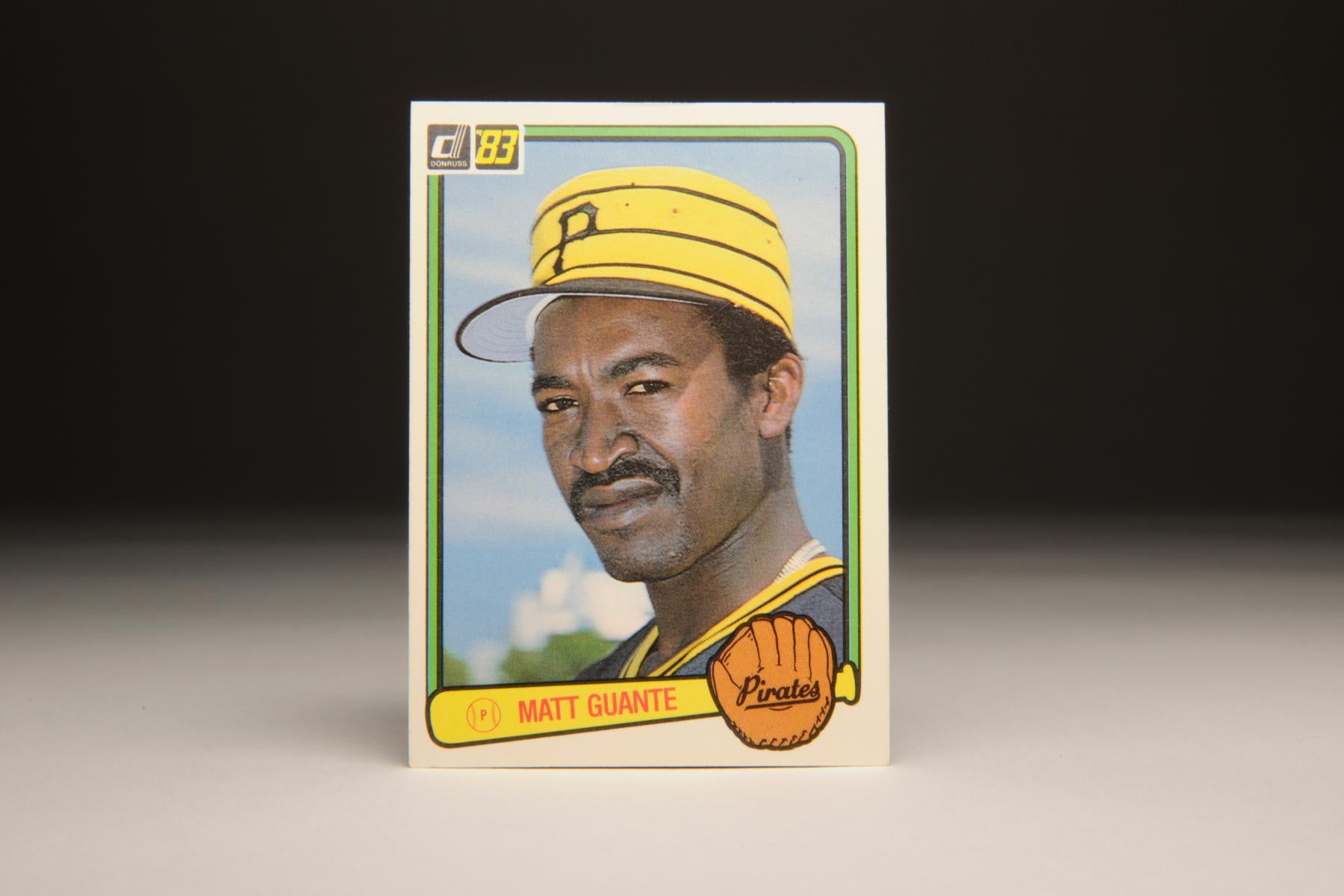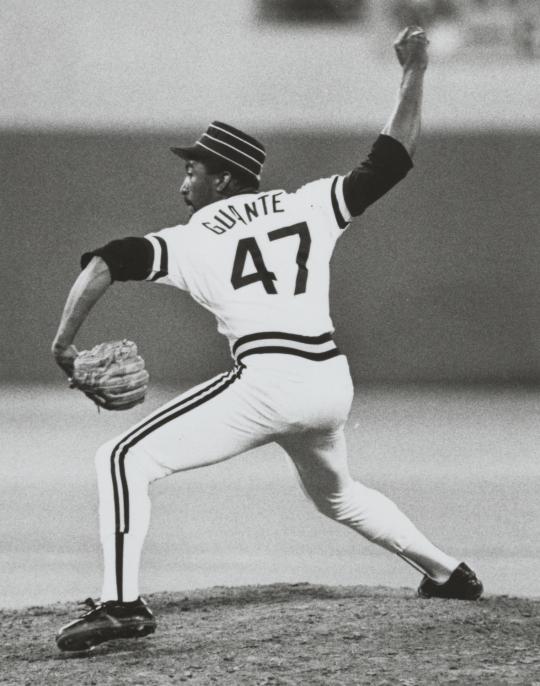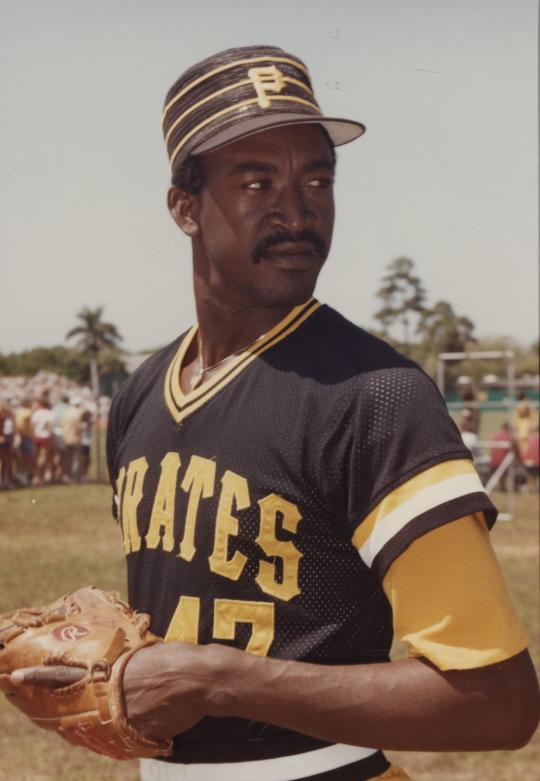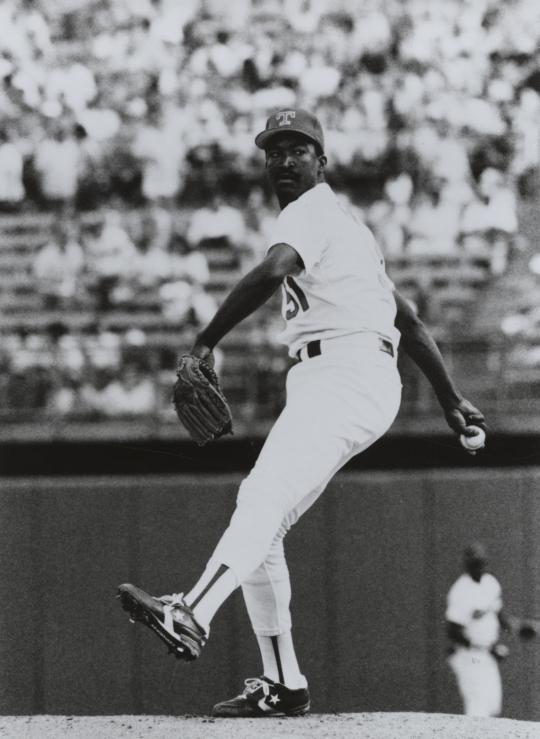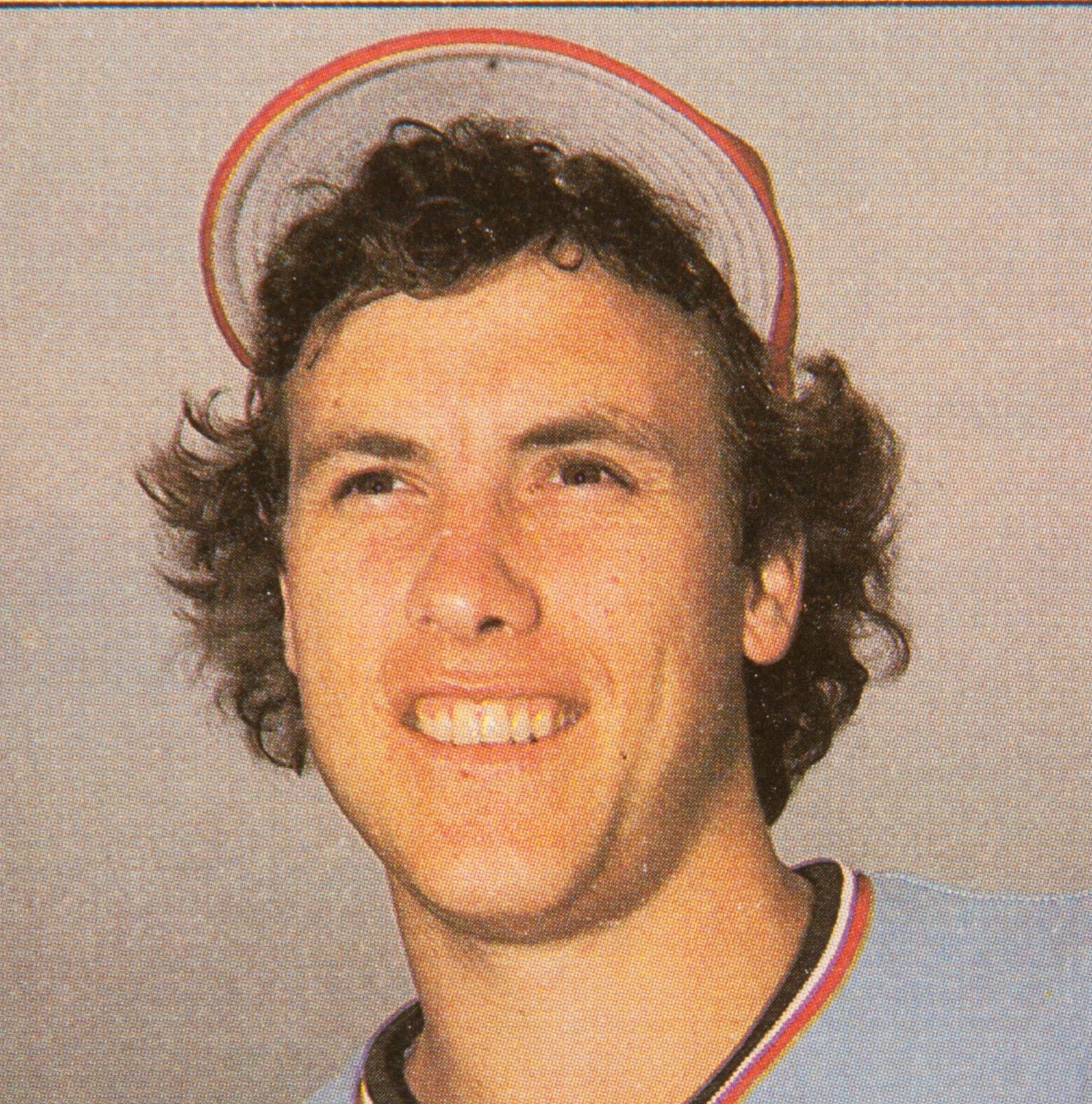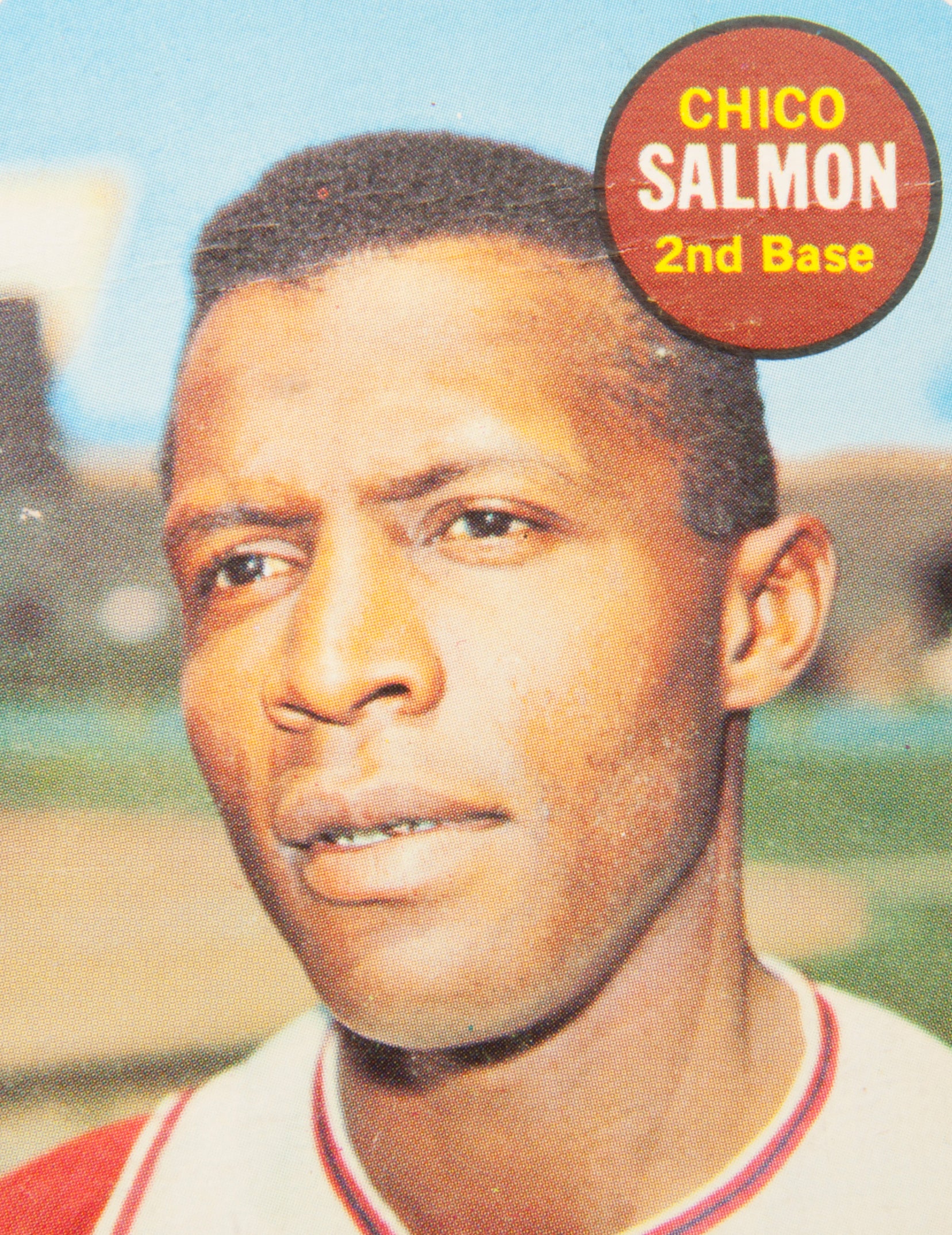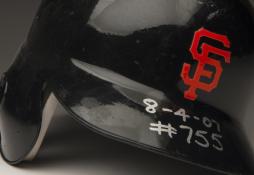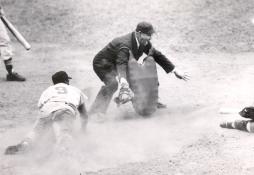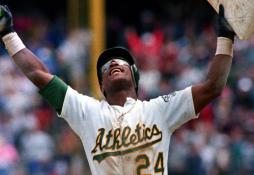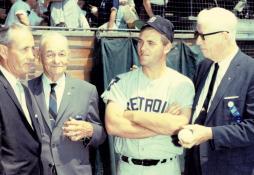- Home
- Our Stories
- #Card Corner: 1983 Donruss Cecilio Guante
#Card Corner: 1983 Donruss Cecilio Guante
Hall of Fame staffers are also baseball fans and love to share their stories. Here is a fan's perspective from Cooperstown.
Some errors on baseball cards just jump off the cardboard and sock you square in the mouth. It’s safe to put this 1983 Donruss card in that category. The player shown on the card is not “Matt Guante.” There has never been a major leaguer by that name. No, it is Cecilio Guante, who was a pretty good relief pitcher for a few seasons back in the early 1980s. “Matt” is a name that will never be confused for “Cecilio,” so the error on this otherwise wonderful card is worth a little research.
Ever since this card came out 32 years ago, it has been a question that has burned without resolution. Perhaps we can find one.
I could understand if Donruss had published the card with the name of “Claudio Guante” on it. Or “Cirilo Guante.” Or even something like “Carlos Guante.” But “Matt Guante?” That’s not even close. Matt is obviously not a Latino name. Nor is Matt a nickname that would normally be given to a Latino player. It just doesn’t fit in any way, shape, or form.
Perhaps the answer can be found in Guante’s full name, which is Cecilio Guante Magallane. A native of the Dominican Republic, Guante has no middle name, but a last name and a secondary last name. (In many Latin American countries, children are given two last names: their father’s last name and their mother’s maiden name.) In the case of Guante, his mother’s maiden name was Magallane. I don’t see how that could be mistaken for Matt. Perhaps “Mag,” or “Mags,” but not Matt.
There is one other possible answer. A few years ago, a fellow collector told me that he believed that Donruss had confused Cecilio Guante with Matt Galante, who was a coach for the Houston Astros back in the 1980s. Perhaps someone with the card company remembered Galante’s name and transposed his first name onto Guante’s last name. Galante and Guante sound alike, especially when you say them quickly. I suppose that’s as good an explanation as any.
While this glaring case of mistaken identity remains the most memorable part of the card, it has other points of merit, too. First, the 1983 Donruss design was both crisp and simple. I like the way the yellow bat and brown glove, along with the thin green line, frame the outer portions of the card. The “D” and the “83” in the corner make it easy to identify the year and the company. The photography throughout this set is also good. This is a clear close-up shot of Guante, who was just starting to make a name for himself when this card came out. The photographer even managed to capture Guante’s trademark scowl, which he often flashed on the mound. While the name confuses us, the photograph certainly does not.
For reasons that I will explain, Guante was one of my favorite players of the 1980s. I liked him in part because he pitched for the Pittsburgh Pirates, one of the three teams I followed closely at the time. He came into games in the seventh and eighth innings throwing fastballs in the low to mid-nineties. He also had this funky three-quarters delivery, which would sometimes descend into a complete sidearm motion. Coupled with his lanky build, that motion made him doubly tough on right-handed batters. He was fun to watch.
Additionally, I just loved the name. Cecilio Guante is just so smooth and lyrical to say. The name becomes even more amusing to someone who grew up in a bilingual household, where we spoke both English and Spanish. I knew immediately that “Guante” is Spanish for glove. So his name translates into Cecil Glove! How could you not love that name, particularly for a ballplayer?
Guante’s professional career began in 1980, shortly after the Pirates signed him out of the Dominican. He struggled at times with his control and command, but the Pirates loved his arm and brought him to the major leagues quickly, allowing him to make his debut in 1982. He pitched well in 10 relief appearances, striking out 26 batters in 27 innings.
The Pirates made Guante a full-time member of their bullpen in 1983, the year that this Donruss card came out. Over the next four seasons, he pitched exceedingly well, only occasionally receiving chances to save games, but dominating the seventh and eighth innings. He was never better than in 1985, when he logged 109 innings out of the bullpen (almost unheard of in today’s game), struck out 92 batters and sported an ERA of 2.72.
Guante wasn’t quite as good in 1986, but still did creditable work as the set-up man to veteran closer Don Robinson. The New York Yankees took notice. That winter, as part of an effort to add a veteran starter to head up their rotation, the Yankees asked the Pirates about the availability of Rick Rhoden. As negotiations persisted, the Yankees insisted that Guante be included in the deal. So the Pirates gave up Guante, Rhoden, and lefty reliever Pat Clements for a package of three young pitchers: Doug Drabek, Brian Fisher, and Logan Easley.
In becoming one of the primary set-up men to Dave Righetti, Guante struggled in his adjustment to the American League. Appearing in only 23 games because of a sore shoulder, Guante posted an ERA of 5.73, by far the worst of his career. With Guante among the many pitching disappointments in the Bronx, the Yankees finished fourth in the American League East.
While Guante struggled on the field, the quirky reliever became popular with his teammates, who seemed to enjoy his little idiosyncrasies. For example, he inscribed a large “G” onto the webbing of every one of his gloves, as if he were afraid that he might pick up the wrong glove by accident. He said little around the ballpark, but showed a sense of humor by wagging his finger or pretending to be angry and yelling curse words in Spanish. In turn, a number of the Yankees made him a landing spot for their jokes, but almost always in a good-natured way.
Despite a loss in velocity caused by the shoulder trouble, Guante pitched much more effectively in 1988 and drew the praise of his manager, Billy Martin, a man who could be hard to please. “He has been super the whole year,” Martin told the New York Post. “He has a great attitude, and we have a good rapport. He’s the type of guy who’s enthusiastic. He likes a pat on the back, and he tells me what he’s thinking.”
In contrast, Guante didn’t like to tell the media what he was thinking. A quiet man who preferred spending his time in the clubhouse playing cards with teammates, he couldn’t stand the never-ending swarm of writers and broadcasters, a huge contrast to the relative peace of Pittsburgh. As a way of minimizing his interactions with media members, Guante often glared at reporters who asked him questions. If they persisted, he typically said, “No comprendo,” which is Spanish for “I don’t understand.” Basically, he pretended that he spoke no English. A few of the reporters believed him, but others realized that he was putting on a ruse to avoid talking to the media.
Although Guante emerged as arguably the team’s most effective relief pitcher in 1988, the midseason firing of Martin and the switch to a new manager, Lou Piniella, proved to be a bad match. Piniella began to use Guante less and less. Guante then requested a trade, a request that the Yankees soon fulfilled.
Within a week of Guante’s complaint, the Yankees announced a deal, sending the sidewinding right-hander to the Texas Rangers for a lesser reliever named Dale Mohorcic. It was not until Guante’s final day in pinstripes, when he learned that he had officially been traded to Texas, that he admitted to all of the writers and broadcasters that he could speak English more than acceptably.
In making his exit from New York, Guante started to speak plenty of English. “Free at last!” he exclaimed as he departed the clubhouse for a final time, unable to hide his disdain for his manager and the New York media. “Anything to get out of here.”
Guante spent the next two and a half seasons with the Rangers and Cleveland Indians before his career ended rather abruptly in 1990. At the time he threw his last major league pitch, he was just 30 years old. There were no reports that he had injured his arm and little discussion of him perhaps trying to draw interest from another team. Instead, he finished his big league service quietly, with a total of 503 strikeouts in 595 innings and a respectable 3.48 ERA.
And that was it.
The fast end to Cecilio Guante’s career remains just about as mystifying as his 1983 Donruss card.
Bruce Markusen is the manager of digital and outreach learning at the National Baseball Hall of Fame

